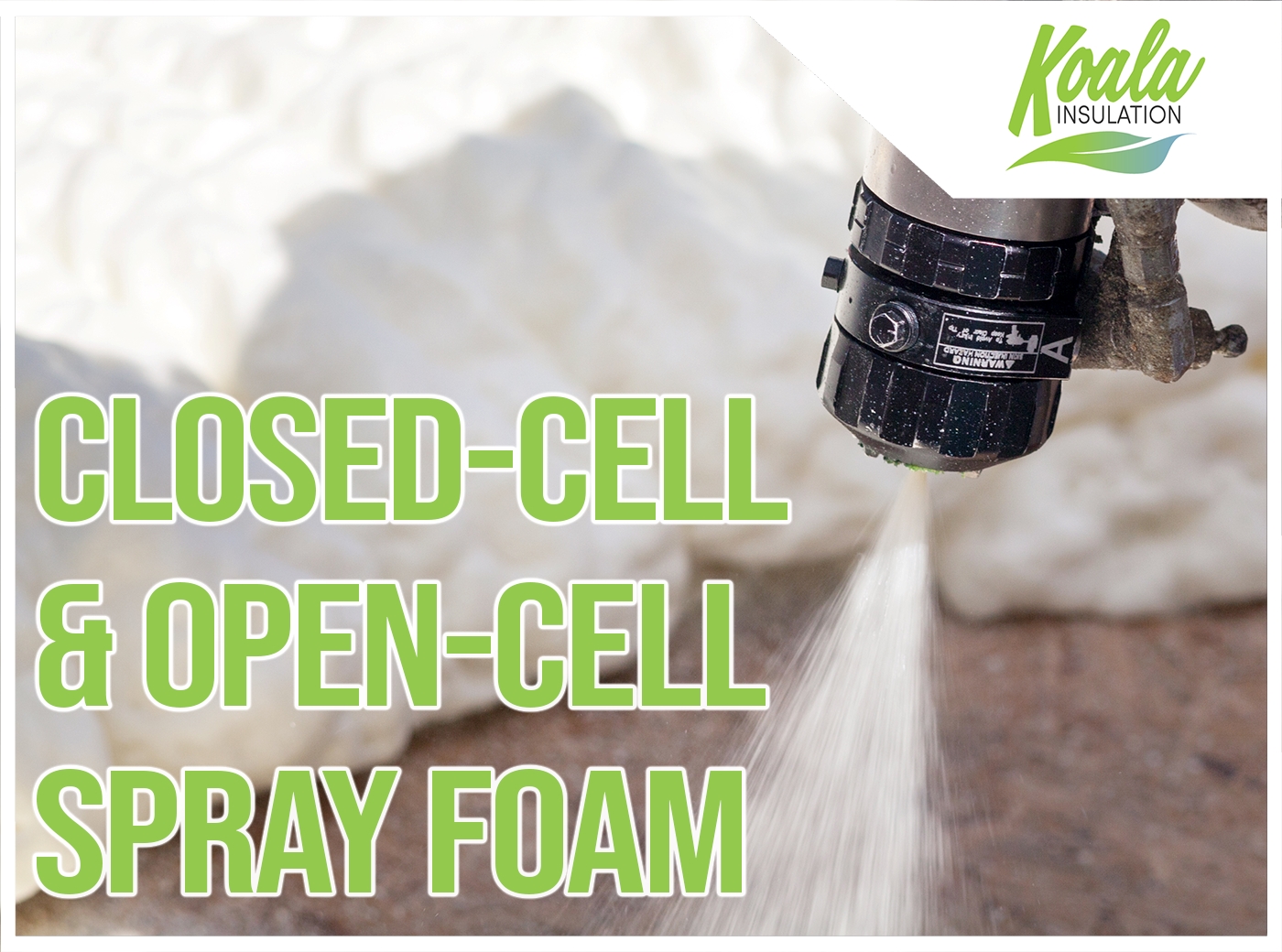
3 Benefits of Open-Cell and Closed-Cell Spray Foam in South Carolina
What is Spray Foam Insulation?
If you’re looking for a strong insulator and air sealant, spray foam insulation is a great choice to install throughout your home. The chemicals are mixed on-site to be sent through a hose and sprayed on a surface where they react upon application. After the solution has hardened, the material creates a long-term barrier with one of the longest lifespans out of your insulation options. The expansion makes it a great sealant as it fills into small cracks and crevices on the surface it's applied to. This reduces air leaks and the entrance of outdoor allergens and pollutants.
In the U.S., your insulation technician needs to be trained and certified in order to apply spray foam with this type of equipment. Having this experience helps to ensure your local experts are able to properly and effectively use the spray foam rig while installing the correct mixture and amount. The training they received involved accurately balancing the chemicals, applying the solution safely, and guaranteeing the expansion of the foam was set and dried before allowing anyone to enter the building without PPE (personal protective equipment).
Two Types of Spray Foam Insulation
Spray foam insulation can be applied in many different areas of your home. It’s commonly added in between wall beams, ceiling joists, and floorboards. Knowing where insulation needs to be installed is only the first part, though. You also need to know which type of spray foam to install: closed-cell or open-cell.
Both types of spray foam provide benefits that can improve your environment but it will vary depending on the needs of your home. Closed-cell spray foam is more rigid and dense, making it a popular choice for structural support and moisture resistance. Open-cell, on the other hand, is typically recognized by the bubbly, cloud-like appearance and it’s more often used in warmer climates. When you’re deciding what type of insulation is best suited to be installed in your home, it’s important to learn more about the different strengths and advantages each material has to offer.
Top Benefits of Closed-Cell Spray Foam
Most commonly known as the R-value, an insulation’s resistance value is the numerical measurement of the material’s ability to reduce heat transfer. Typically, a higher R-value means less material is needed to slow the rate at which heat moves through a structure.
Closed-cell spray foam has an average of R-6.9 per inch of depth, which is considered one of the highest R-values out of most insulation options. This kind of resistance value helps to prevent the entrance of unwanted heat in the summer and heat loss during the winter.
Although R-value is an important factor to consider when you’re taking a closer look at your insulation choices, there are many other benefits each option can offer.
Closed-cell spray foam is a quality vapor and moisture barrier, preventing condensation and water from impacting your structure. A vapor barrier reduces the risk of higher humidity in your house, which would otherwise create an ideal environment for mold or bacteria growth.
Humidity and damp areas can also potentially attract pests such as dust mites, carpenter ants, termites, and more. While pests may threaten the integrity of your structure, mold and bacteria could increase the risk of health hazards and respiratory irritation.
We mentioned earlier that closed-cell spray foam is a high-density material that’s more rigid than its open-cell counterpart. These traits allow the material to contribute to some structural support of your building envelope.
This spray foam material contributes to the strength of the surface it’s applied to, including inside walls, in between ceiling and floor joists, or even on roofs. While this advantage makes closed-cell spray foam a common choice for industrial and commercial buildings, your home can also greatly benefit from the support provided by this material.
Top Benefits of Open-Cell Spray Foam
With an average R-value of about R-3.7 per inch of depth, open-cell spray foam has a significantly reduced resistance value when compared to closed-cell spray foam. However, this value is still higher than many other commonly installed materials, such as fiberglass batts or blown-in cellulose.
Because of how the material is installed, it’s also easier to apply enough material to reach a comfortable R-value. When the chemicals react as the material is applied, the insulation technician can easily add more spray foam to increase the overall R-value based on thickness.
Are you looking to reduce the noise going on between the rooms or floors of your home? Do you have trouble concentrating on a task because of all the sound coming in from outside? Many homeowners don't realize insulation can significantly reduce noise pollution problems. Open-cell spray foam is a better material for sound absorption than closed-cell and many other insulation materials.
This type of spray foam is more porous, which makes it more effective at trapping any sound waves coming from inside or outside of the house. Many insulation materials can provide a little noise reduction by working as a sound barrier in the same way they act as a barrier to heat transfer: the insulation slows the movement of waves through a structure, which helps decrease the noise forming from outside or other rooms.
Open-cell spray foam is lighter than the dense version of closed-cell. On average, it only weighs about ½ pound per cubic foot. This is thanks to the interconnected open cells of the foam, which is where the insulation gets its name from. Coincidentally, this also makes this type of spray foam considerably more flexible than other materials.
The flexibility of open-cell spray foam is beneficial for seasonal expansion and contraction, which homeowners may notice as the house “settles” throughout the year as the temperature changes. The ability to adjust with the building’s movements helps to prevent air leaks, which can be problematic even as the tiniest of openings and cracks within the building envelope.
What Is The Best Insulation Material For South Carolina?
Your home has needs that are unique to the other buildings in your state, region, and even down to the neighborhood. In many cases, spray foam is the perfect option to install in deteriorated or damaged areas. But how can you know without the right equipment and inspections?
Contact your local insulation professionals at Koala Insulation of Greenville to schedule your free evaluation and learn more about improving your safety, savings, and comfort.
Ready to book your free insulation evaluation?
We have 3 convienant ways for you to get in touch
We Provide Insulation Services to the Following Greenville Areas
DUNCAN, LANDRUM, LYMAN, GREENVILLE, GREER, TAYLORS, EASLEY, TRAVELERS REST, BELTON, FOUNTAIN INN, MAULDIN, PELZER, PIEDMONT, SIMPSONVILLE, WILLIAMSTON
Counties Served
SPARTANBURG, GREENVILLE, PICKENS, ANDERSON, LAURENS
Zip Code
29334, 29356, 29365, 29615, 29650, 29651, 29687, 29601, 29605, 29607, 29609, 29611, 29613, 29614, 29617, 29640, 29642, 29690, 29627, 29644, 29662, 29669, 29673, 29680, 29681, 29697

